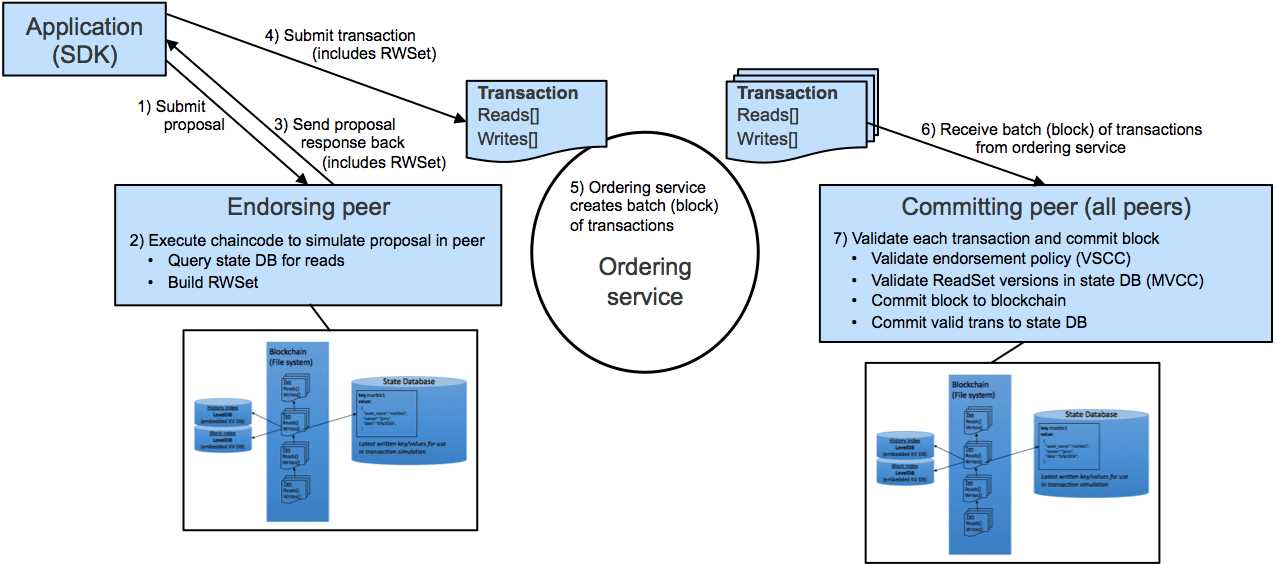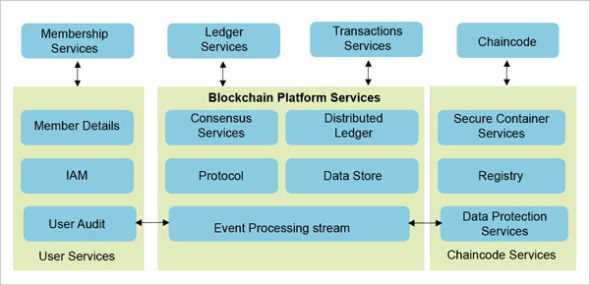What is Hyperledger?

Hyperledger is a leading open-source blockchain framework and standards organization. It was established in 2015 by the Linux Foundation with the goal of advancing cross-industry blockchain technologies. Unlike other blockchain platforms, Hyperledger focuses on providing tools and resources for building enterprise-grade blockchain solutions.
At its core, Hyperledger is not a single blockchain, but rather a collection of modular frameworks and tools that developers can use to create their own customized blockchain networks. These frameworks are designed to be flexible, scalable, and secure, making them ideal for a wide range of business applications.
Key Features of Hyperledger:
1. Permissioned Networks: Hyperledger allows organizations to create private, permissioned blockchain networks, where only authorized participants can access and validate transactions. This ensures privacy and confidentiality, making it suitable for industries that require strict data governance.
2. Modular Architecture: Hyperledger’s modular architecture enables developers to choose and combine different components to create a blockchain network that meets their specific requirements. This flexibility allows for easy customization and integration with existing systems.
3. Consensus Mechanisms: Hyperledger supports multiple consensus mechanisms, including Practical Byzantine Fault Tolerance (PBFT), Proof of Stake (PoS), and Proof of Elapsed Time (PoET). This allows organizations to choose the consensus algorithm that best suits their network’s needs.
4. Smart Contracts: Hyperledger provides a framework called Hyperledger Fabric, which supports the execution of smart contracts. Smart contracts are self-executing agreements with predefined rules and conditions, making them ideal for automating business processes.
5. Scalability and Performance: Hyperledger frameworks are designed to handle high transaction volumes and provide fast transaction processing times. This scalability and performance make Hyperledger suitable for enterprise-level applications.
Overall, Hyperledger offers a robust and flexible platform for building blockchain solutions. Its focus on enterprise-grade features, modular architecture, and permissioned networks make it a popular choice for businesses looking to leverage the benefits of blockchain technology.
Benefits of Hyperledger
Hyperledger is a leading open-source blockchain framework and standards organization that offers several benefits for businesses and developers. Here are some of the key advantages of using Hyperledger:
1. Transparency and Trust:
Hyperledger provides a transparent and immutable ledger that can be shared among multiple participants. This ensures trust and eliminates the need for intermediaries, making transactions more efficient and secure.
2. Privacy and Confidentiality:
Hyperledger allows businesses to maintain privacy by providing permissioned blockchains. This means that only authorized participants can access and view the data, ensuring confidentiality and compliance with regulatory requirements.
3. Scalability:
Hyperledger offers scalability options that allow businesses to handle a large number of transactions. It provides modular architecture and flexible consensus mechanisms, enabling organizations to scale their blockchain networks as per their requirements.
4. Flexibility and Customization:
Hyperledger provides a flexible framework that allows developers to customize and build blockchain solutions according to their specific business needs. It supports smart contracts and offers a range of programming languages, making it easier to develop and deploy applications.
5. Interoperability:
Hyperledger promotes interoperability by providing a common set of standards and protocols. This allows different blockchain networks to communicate and share data seamlessly, enabling collaboration between organizations and enhancing the overall efficiency of the ecosystem.
6. Cost Savings:
Hyperledger can help businesses reduce costs by eliminating the need for intermediaries and streamlining processes. It enables automation of trust-based transactions, reducing manual efforts and minimizing the risk of errors.
7. Community Support:
Hyperledger has a vibrant and active community of developers, contributors, and users. This community provides support, shares knowledge, and collaborates on the development of new features and improvements, ensuring the continuous growth and evolution of the Hyperledger ecosystem.
Advantages of using Hyperledger for blockchain development
Hyperledger is a leading open-source blockchain framework and standards organization that offers several advantages for blockchain development. These advantages make it an attractive choice for businesses and developers looking to build secure and scalable blockchain solutions.
1. Enhanced Security
Hyperledger provides enhanced security features that ensure the integrity and confidentiality of blockchain transactions. It utilizes cryptographic algorithms and consensus mechanisms to prevent unauthorized access and tampering of data. This makes it suitable for applications that require high levels of security, such as financial systems and supply chain management.
2. Scalability
3. Interoperability

Interoperability is a key advantage of Hyperledger, as it allows different blockchain networks to communicate and share data seamlessly. Hyperledger provides a common framework and standards that enable interoperability between various blockchain platforms, making it easier to integrate existing systems and collaborate with other organizations. This interoperability reduces complexity and enhances the overall efficiency of blockchain networks.
4. Flexibility
Hyperledger offers a high degree of flexibility in terms of development options. It supports multiple programming languages, allowing developers to choose the language they are most comfortable with. Additionally, Hyperledger provides a modular architecture that allows developers to customize and extend the framework to meet their specific requirements. This flexibility enables businesses to build blockchain applications that align with their unique needs and workflows.
5. Community Support
Hyperledger has a vibrant and active community of developers, contributors, and users who provide support and contribute to the growth of the framework. This community-driven approach ensures continuous improvement and innovation in the Hyperledger ecosystem. Developers can leverage the knowledge and expertise of the community to troubleshoot issues, share best practices, and collaborate on new projects.
Hyperledger Projects

Hyperledger is an open-source collaborative effort created to advance cross-industry blockchain technologies. Under the Hyperledger umbrella, there are several projects that aim to develop frameworks, tools, and libraries for building enterprise-grade blockchain solutions.
Here are some of the key Hyperledger projects:
| Project Name | Description |
|---|---|
| Hyperledger Fabric | Hyperledger Fabric is a modular and scalable framework for developing permissioned blockchain networks. It provides a high degree of flexibility, allowing organizations to customize their blockchain networks according to their specific requirements. |
| Hyperledger Sawtooth | Hyperledger Sawtooth is a highly modular and scalable blockchain platform that focuses on simplicity and versatility. It enables developers to create and deploy smart contracts using different programming languages. |
| Hyperledger Iroha | Hyperledger Iroha is a blockchain framework designed for building decentralized applications. It provides a simple and easy-to-use interface, making it suitable for projects that require fast deployment and rapid prototyping. |
| Hyperledger Indy | Hyperledger Indy is a distributed ledger specifically designed for decentralized identity management. It enables individuals to have control over their digital identities and provides a secure and privacy-preserving solution. |
| Hyperledger Burrow | Hyperledger Burrow is a permissioned smart contract engine that supports the Ethereum Virtual Machine (EVM). It allows developers to write and execute smart contracts using the Solidity programming language. |
These are just a few examples of the projects under the Hyperledger umbrella. Each project has its own unique features and capabilities, catering to different use cases and industries. The collaborative nature of Hyperledger ensures that these projects benefit from the collective expertise and contributions of a diverse community of developers and organizations.
By leveraging these Hyperledger projects, businesses can harness the power of blockchain technology to build secure, transparent, and scalable solutions that address various challenges across industries such as supply chain management, finance, healthcare, and more.
An Overview of the Different Projects under the Hyperledger Umbrella
Hyperledger is an open-source blockchain framework and community that aims to advance cross-industry blockchain technologies. Under the Hyperledger umbrella, there are several projects that cater to different use cases and industries.
1. Hyperledger Fabric: Fabric is one of the most popular projects under Hyperledger. It is a modular and scalable framework for developing enterprise-grade blockchain applications. Fabric provides a high degree of flexibility, allowing organizations to design and implement their own consensus mechanisms and smart contract languages.
2. Hyperledger Sawtooth: Sawtooth is another prominent project that focuses on scalability and modularity. It utilizes a unique consensus algorithm called Proof of Elapsed Time (PoET) to achieve high transaction throughput. Sawtooth also supports multiple smart contract languages, making it suitable for a wide range of applications.
3. Hyperledger Indy: Indy is specifically designed for decentralized identity management. It provides tools and libraries for building self-sovereign identity systems, where individuals have control over their personal information. Indy enables secure and privacy-preserving digital identities, which are essential for various industries such as healthcare and finance.
4. Hyperledger Iroha: Iroha is a blockchain platform that focuses on simplicity and ease of use. It provides a rich set of libraries and development tools, making it ideal for rapid prototyping and development of blockchain applications. Iroha is particularly suitable for projects that require a low-resource footprint, such as IoT applications.
5. Hyperledger Besu: Besu is an Ethereum client that is compatible with the Ethereum Virtual Machine (EVM). It allows developers to build private and public blockchain networks using the Ethereum protocol. Besu supports various consensus mechanisms and provides enterprise-grade features, making it a versatile choice for blockchain development.
6. Hyperledger Burrow: Burrow is an Ethereum-compatible smart contract engine that provides a modular and efficient execution environment. It is designed to be highly scalable and supports multiple consensus algorithms. Burrow is particularly useful for organizations that want to leverage the Ethereum ecosystem while maintaining control over their blockchain networks.
7. Hyperledger Caliper: Caliper is a blockchain benchmarking tool that allows developers to measure the performance of different blockchain platforms. It provides a standardized way to evaluate the scalability and efficiency of various blockchain solutions, helping organizations make informed decisions when choosing a platform for their specific use case.
8. Hyperledger Cello: Cello is a blockchain provisioning and management system that simplifies the deployment and operation of blockchain networks. It provides a user-friendly interface for creating, managing, and terminating blockchain networks, making it easier for organizations to adopt and maintain blockchain solutions.
9. Hyperledger Transact: Transact is a transaction execution platform that provides a common interface for executing smart contracts across different blockchain platforms. It abstracts the underlying blockchain implementation, allowing developers to write portable smart contracts that can be deployed on multiple platforms without modification.
10. Hyperledger Ursa: Ursa is a modular cryptography library that provides a set of reusable cryptographic components for building secure blockchain applications. It aims to standardize and consolidate cryptographic algorithms and protocols used in different Hyperledger projects, promoting interoperability and security.
These are just a few examples of the projects under the Hyperledger umbrella. Each project addresses specific needs and use cases, allowing organizations to choose the most suitable framework for their blockchain development requirements.
Hyperledger Standards
Standards play a crucial role in the Hyperledger ecosystem. They ensure interoperability, compatibility, and consistency across different Hyperledger projects and implementations. By adhering to standards, developers can build blockchain applications that can seamlessly integrate with other Hyperledger projects and networks.
Hyperledger follows an open and collaborative approach to develop its standards. The Hyperledger Technical Steering Committee (TSC) oversees the standardization process and ensures that it is transparent and inclusive. The TSC consists of technical leaders from various organizations involved in the Hyperledger community.
The Hyperledger community actively contributes to the development of standards through working groups. These working groups focus on specific areas such as identity, privacy, smart contracts, and consensus mechanisms. They collaborate to define and refine the standards that govern the operation and interaction of Hyperledger projects.
By establishing standards, Hyperledger enables developers to create blockchain solutions that are portable and compatible across different platforms. This promotes interoperability and allows for the seamless exchange of data and assets between different blockchain networks.
Furthermore, Hyperledger standards provide a level of assurance and trust for businesses and organizations looking to adopt blockchain technology. By following established standards, they can ensure that their blockchain implementations are secure, reliable, and compliant with industry best practices.
Overall, the establishment of standards within the Hyperledger ecosystem fosters innovation, collaboration, and the widespread adoption of blockchain technology. It enables developers to build robust and scalable blockchain applications that can effectively address real-world business challenges.
The importance of standards in the Hyperledger ecosystem
Standards play a crucial role in the Hyperledger ecosystem, ensuring interoperability, compatibility, and consistency across different projects and implementations. By establishing common guidelines and protocols, standards enable seamless integration and collaboration among various participants in the blockchain network.
One of the key advantages of Hyperledger is its focus on open-source development, which encourages community-driven innovation and collaboration. However, without standards, this decentralized approach could lead to fragmentation and incompatibility between different implementations.
Standards provide a common language and framework for developers, businesses, and organizations to build upon. They define the rules and specifications that govern the behavior and interactions of different components within the Hyperledger ecosystem. This ensures that all participants can communicate effectively and reliably, regardless of the specific project or implementation they are using.
Moreover, standards promote transparency and trust within the Hyperledger community. By adhering to a set of agreed-upon standards, participants can have confidence in the security, reliability, and integrity of the blockchain network. This is particularly important in industries where trust is paramount, such as finance, supply chain, and healthcare.
Standards also facilitate the scalability and scalability of Hyperledger projects. With a common set of protocols and guidelines, developers can easily integrate new modules, applications, and services into existing Hyperledger implementations. This allows for rapid innovation and expansion of the ecosystem, without sacrificing compatibility or stability.
Furthermore, standards enable interoperability between different blockchain networks and platforms. By defining common interfaces and protocols, Hyperledger projects can seamlessly communicate and interact with other blockchain systems, both within and outside the Hyperledger ecosystem. This opens up new possibilities for collaboration, cross-chain transactions, and the exchange of assets and data.

Emily Bibb simplifies finance through bestselling books and articles, bridging complex concepts for everyday understanding. Engaging audiences via social media, she shares insights for financial success. Active in seminars and philanthropy, Bibb aims to create a more financially informed society, driven by her passion for empowering others.
